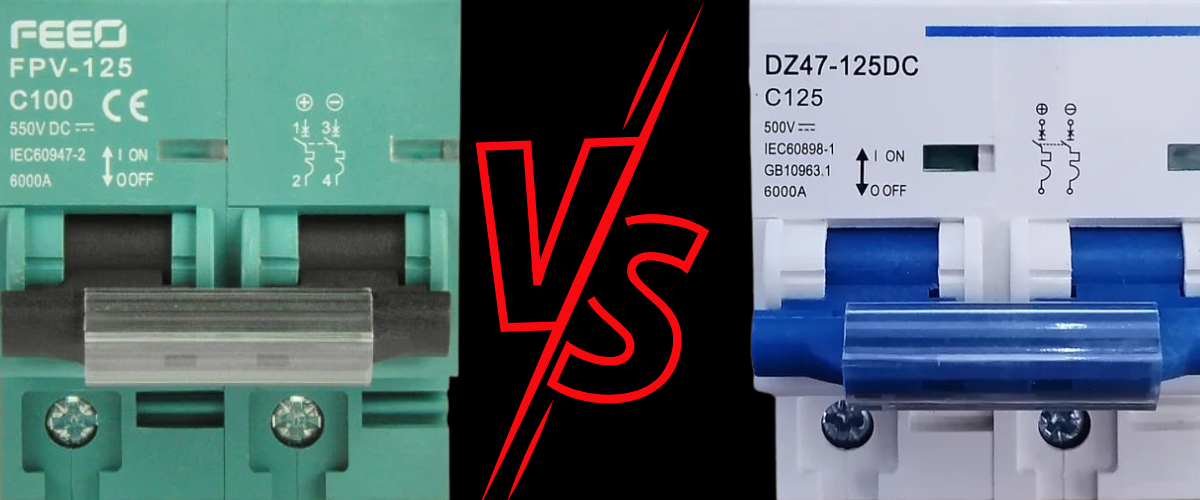
As of my last update in September 2021, there are some key differences between IEC 60947-2 and IEC 60898-1 when applied to DC (Direct Current) circuits. Please note that standards might have been updated or revised after my last update, so it’s essential to verify the latest versions. Here are the main differences:
- Scope and application:
- IEC 60947-2: This standard specifically deals with low-voltage switchgear and control gear intended for use in DC circuits up to 2,000 V. It covers a wide range of devices, including circuit-breakers, disconnectors, and switch-disconnectors.
- IEC 60898-1: This standard focuses on low-voltage circuit-breakers for AC (Alternating Current) circuits with rated voltages up to 1,000 V and rated currents up to 125 A. It does not directly address DC applications.
- Voltage and current ratings:
- IEC 60947-2: Designed for DC circuits with voltage ratings up to 2,000 V.
- IEC 60898-1: Designed for AC circuits with voltage ratings up to 1,000 V.
- Breaking capacity:
- IEC 60947-2: The standard specifies breaking capacity requirements for DC circuits, taking into account the differences in arc extinguishing mechanisms between AC and DC circuits.
- IEC 60898-1: The breaking capacity requirements are specified for AC circuits.
- Arc extinguishing:
- IEC 60947-2: Arc extinction in DC circuits is generally more challenging than in AC circuits due to the continuous nature of DC current. The standard addresses the specific requirements for proper arc extinguishing in DC applications.
- IEC 60898-1: Primarily concerned with arc extinction in AC circuits, which have zero-crossing points that aid in arc interruption.
- DC-specific performance testing:
- IEC 60947-2: The standard includes specific performance testing procedures applicable to DC circuit-breakers and other DC switchgear, ensuring their suitability and safety for DC applications.
- IEC 60898-1: Focuses on performance testing for AC circuit-breakers.
- Trip characteristics:
- IEC 60947-2: The standard defines specific trip characteristics that are relevant for DC applications, considering the behavior of DC circuits during faults.
- IEC 60898-1: The trip characteristics are tailored for AC circuits.
- Polarity sensitivity:
- IEC 60947-2: Some DC circuit-breakers may have polarity sensitivity requirements to ensure proper operation in DC they should be totally banned and make sure to buy and install only Non-Polarity DC Breakers.
- IEC 60898-1: AC circuit-breakers typically do not have polarity sensitivity since AC current periodically reverses direction. And can not be used to disconnect an DC arc. Therefore they are extremally unsafe to use in any DC application
It’s crucial to follow the appropriate standard based on your specific application (AC or DC) and adhere to the relevant guidelines to ensure safety and compliance. Always consult the latest version of the standards for accurate and up-to-date information.
Make sure about the certification from your supplier. There are breaker that has certification for AC and will be used for DC and would be polarity breakers and has to be connected in specific way otherwise they could be very dangerous.
